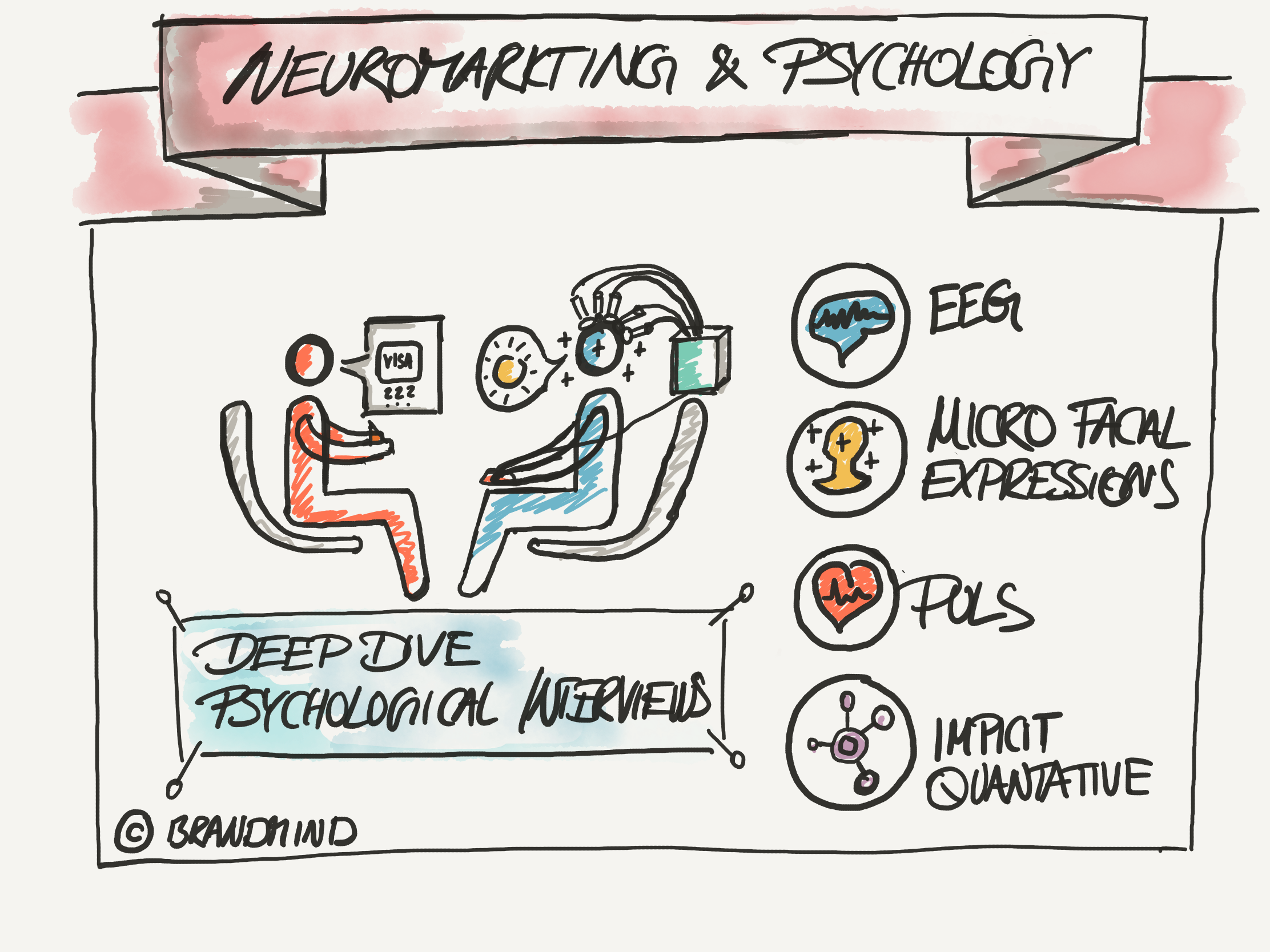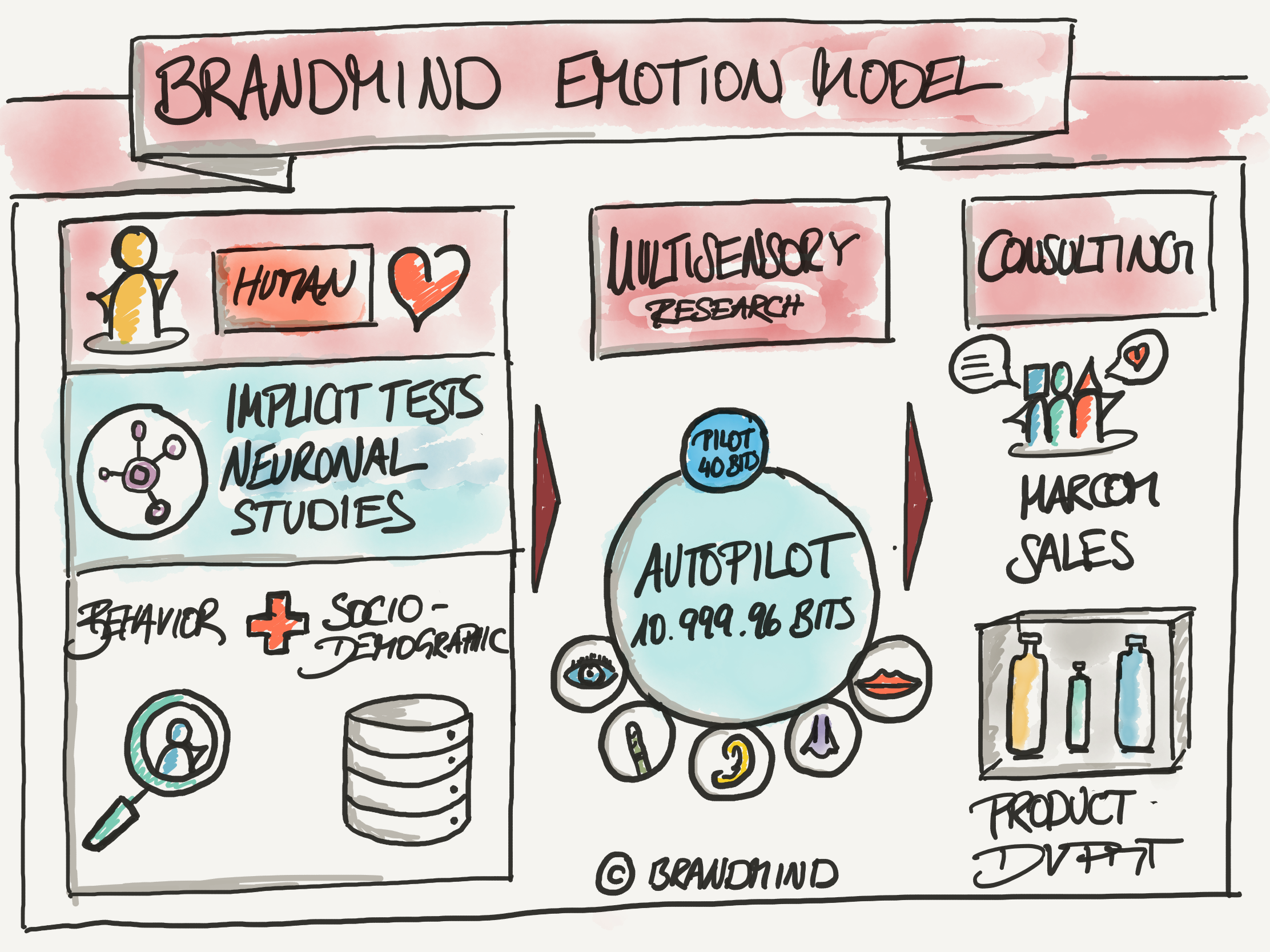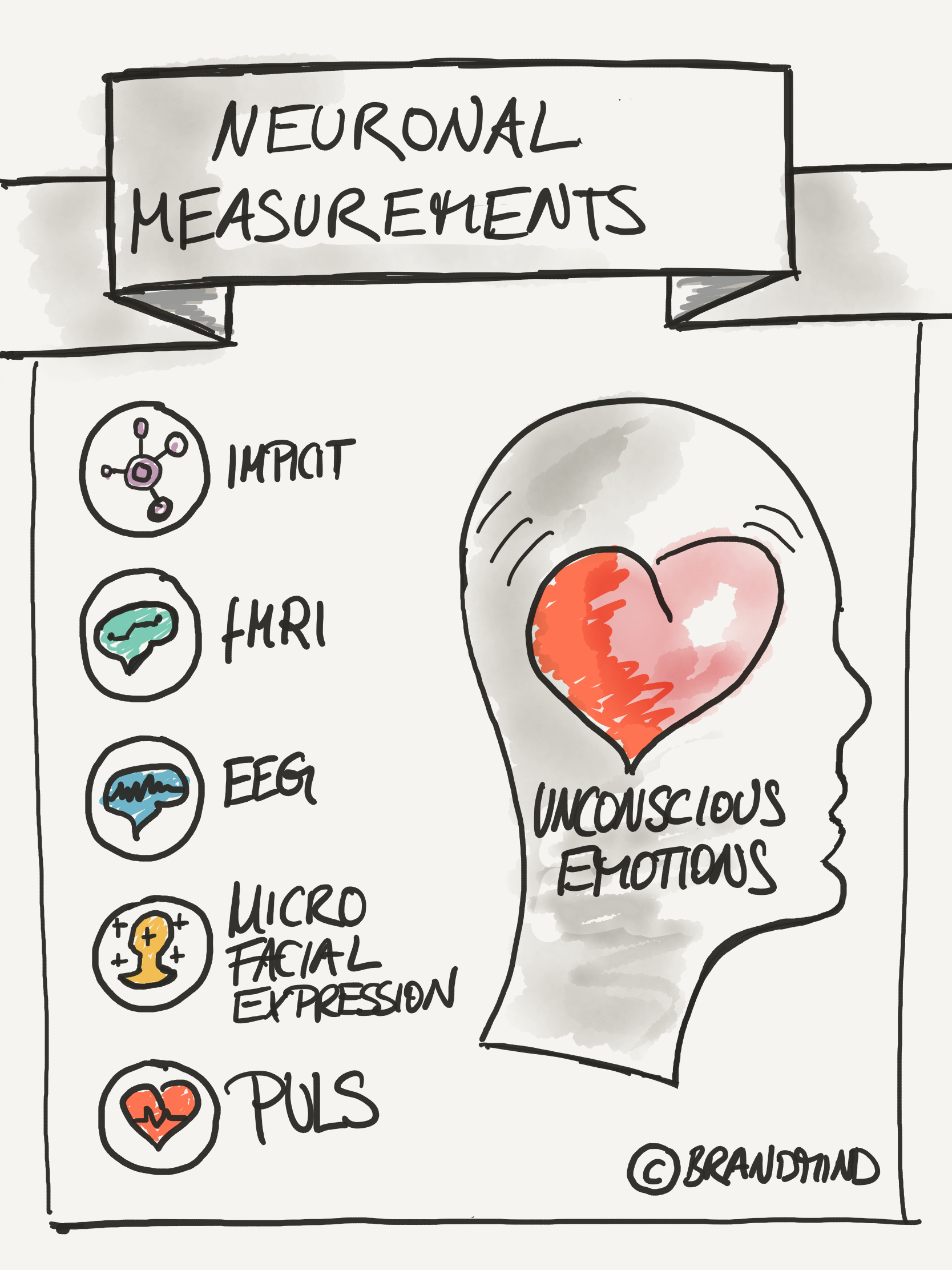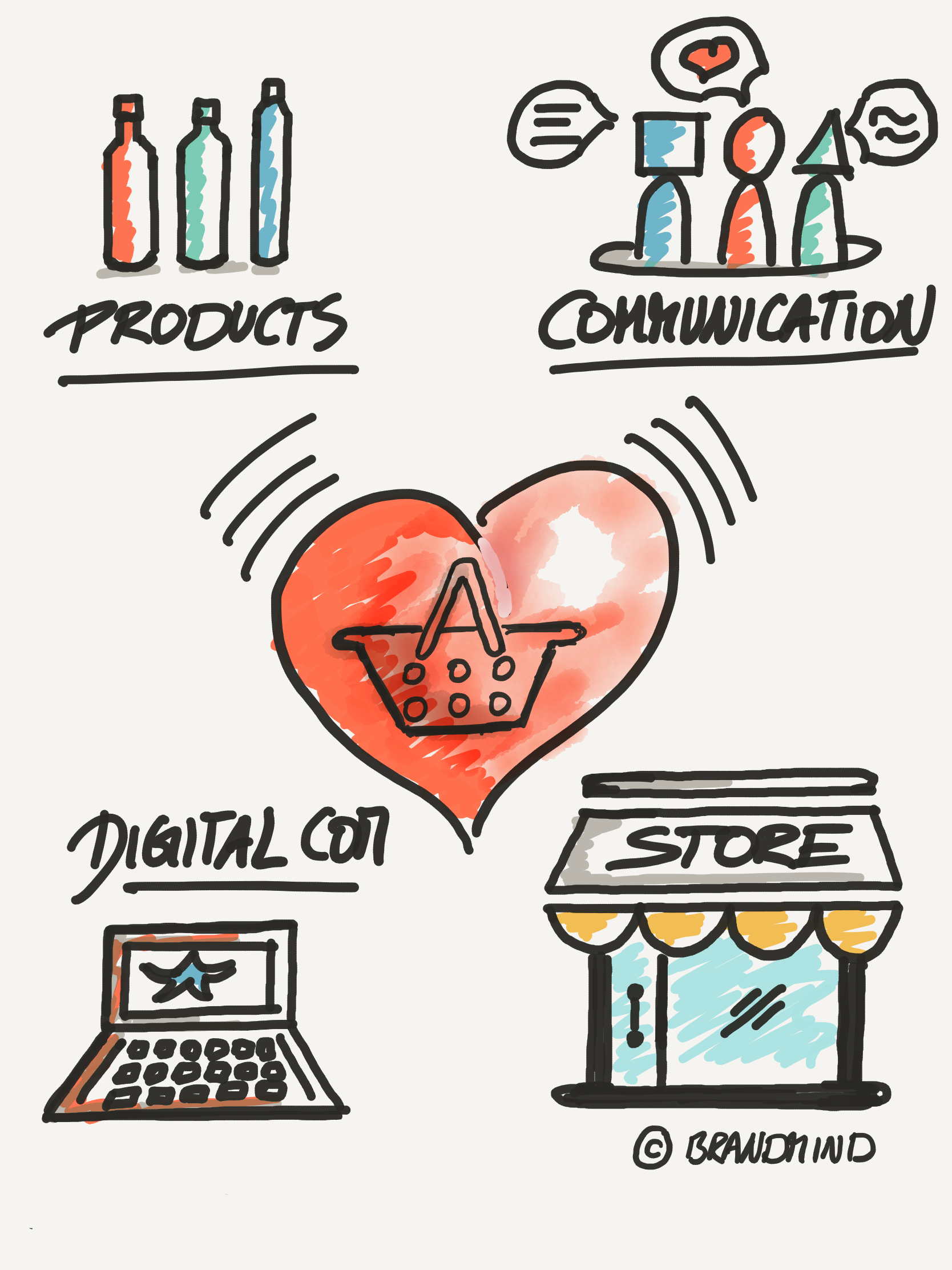Services
Our Services
Psychometric Segmentation
Classical market research has its limits, because people mostly act differently than they tell you. Often they also act irrationally.
Survey of psychometric profiles
Deep dive psychological interviews
Data Science – 360 Customer View
Neuromarketing
Advertising measures should implement the positioning of a brand. In practice, however, there is often a gap between concept and implementation.
We make sure that this does not arise in the first place.
Emotional Brand Positioning
Measurement of emotions neuronal empirical survey
Sensory Touchpoint Management
To understand our core competence “Psychometric Profiling” in an easy way, have a look into our explainer video:
Survey of psychometric profiles
Classic market research has its limitations, because people act differently than they communicate. Often they act irrationally.
In addition, previous segmentation according to socio-demographic and / or behavioral characteristics in operational marketing fall a little short. In direct marketing a persona definition hardly has passed the endurance test.
Socio-demographic characteristics define too broad or general segments and behavior-based data is past-driven data. People are different and they communicate individually. A very valuable addition to the existing segmentations are psychometric profiles. The personality and its motives provide information about which kind of communication (sensory = design, language, visual language, haptics, music etc.) is most effective and which kind of product and product design should be offered.
Based on continuous empirical research in Switzerland (Innosuisse) and access to decades of research, we are able to help companies refine their segmentation and develop practical guidelines. Due to the research activities BrandMind was able to develop a validated implicit (indirect) playful psychological test with which anonymous psychometric profiles can be collected at all digital touchpoints. The findings can of course be matched to existing segmentations.


Deep dive psychological interviews
Deep dive psychological interviews are one-to two-hour projective, qualitative interview procedures. The aim of these in-depth interviews is to establish a connection between the motives and individual features / characteristics of products. Product-specific psychometric profiles can be developed from this interview technique.
BrandMind combines these interviews with neuronal measuring instruments (EEG, pulse measurement, micro mimics, fMRI). The emotional state of excitement is measured using neuronal measurement methods. This makes it possible to determine whether the spoken word has the same meaning as the emotional state of excitement. BrandMind thus combines neuromarketing with psychology.
Deep dive psychological interviews make sense especially under the following conditions:
- Innovative product development
- For the new development / further development of products / services or
- For the reduction of complex, high-quality products or in the case of
- Products that already evoke too strong an association among consumers (e.g. such as Orange juice).
- In-depth market research
- The psychological in-depth interviews are excellent for gaining a deeper understanding
- of which motives motivate consumers to prefer or even buy products.
- In deep dive psychological interviews, aspects emerge that cannot emerge in a classical, quantitative survey.
Data Science – 360 Customer View
Existing persona segmentations are often not significant enough for accurate operational marketing activities and past oriented data only give insight about the past.
Many companies lack in their data of the intelligence and the in-depth to create a robust foundation of a segmentation that could make their marketing activities much more efficient. Only the extension of existing data with psychometric profiles and their sensory preferences form the basis for an individual customer approach.
The collected anonymous psychometric profiles will be matched with existing anonymous customer data and searched for correlations with the socio-demographic, geographical data as well as with data on the type of purchase / purchase frequency. Based on our predictive algorithms, an extrapolation to the entire customer base is then carried out.
For companies who still do not have enough existing customer data, we can support them by using the playful psychological test at all own digital touchpoints to collect additional data.
In this way we help companies to
- develop a consistent and in-depth segmentation and to
- implement the efficient and profound intelligence for marketing activities


Emotional Brand Positioning
In practice, brand positioning and communication often is often all about the product or the USP. However, this type of brand communication does not reach the target audience because it does not trigger emotions and it is not inspiring enough. The limbic system in the brain – responsible for the unconscious perception, evaluation and triggering of behavior – is not addressed in this way.
95% of all decisions are made unconsciously – even purchase decisions. Various consumer behavior and brain research studies have already shown that the emotional enhancement of a brand is not achieved through rational derivation. Because human behavior is controlled by emotions – by communication that stimulates the limbic system: People don’t buy what companies do, but WHY companies exist. Studies have even shown that clear emotional positioning has an effect in people similar to that of religion.
The basic motives and the authentic culture is the true corporate identity. This is where companies differ from each other – in people who share a belief and values in a company.
We support companies in sharpening their emotional brand positioning and adopting a clear positioning that unconsciously addresses the relevant target group (psychometric profiles) in their limbic system.
The emotional WHY positioning should then also be adequately implemented in the brand communication. In practice, this gap of the correct sensory implementation of the emotional brand positioning can often be observed.
People “tick” differently and perceive communication differently through their senses. Language, images, stories, music etc. are all codes in sensor technology and people decode within milliseconds in the brain based on their motives, experiences and attitudes.
We support companies and their advertising agencies in finding out their emotional WHY and then implement it adequately in the sensory codes of communication according to the target group.
Measurement of emotions neuronal empirical survey
Communication, product design, packaging as well as POS design (colors, furnishings, music, staff etc.) are all sensory codes that people perceive and unconsciously decode. These touchpoints should be designed according to the core brand and stimulate the appropriate motives of the target group (psychometric profiles).
Since all categories tend to involve a lot of budget investments, a deep dive in the review of emotional stimulation is very useful.
BrandMind uses the following neuronal measurement methods:
- Pulse measurement,
- Micromimics
- EEG (electroencephalography) and, if required, also
- fMRI (functional magnetic resonance imaging)
These measurement methods provide information about the inner emotional state of excitement. Unlike eye tracking, which “only” measures attention. In individual cases, however, this method can be used especially for marketing activities, e.g. Newsletter Design.
BrandMind uses these measurement methods in combination with psychological in-depth interviews when it comes to identify motivators and fear factors for certain product characteristics in order to compare the explicit statements with the emotional state of excitement.


Sensory touchpoint management
The biggest challenge in practice is the correct implementation of the emotional brand positioning and the matching to the motives of the main psychometric target group.
The correct coding in communication, products, point of sale and sales is often implemented to the best of our knowledge and belief.
However, this step is essential, so that consumers perceive the same unconscious codes at every customer contact point and thus have the same customer experience everywhere and the brand message really reaches the consumer unconsciously.
The following codes are relevant in the various disciplines of design:
- Marketing: colors, shapes, surfaces, haptics, music, storytelling, protagonists, lighting conditions for video & content ads, newsletters, direct mailings, flyers and giveaways
- Product development: product features / features and name, feel, colors, shapes, sounds, taste, fragrances
- Point of Sale (POS): interior design, colors, shapes, music, scents, lighting conditions, personnel
Based on the unconscious, multisensory perception of human beings, information is conveyed within milliseconds before one has dealt with the matter in depth. For example, the interior design in combination with the colors and shapes can indicate the quality of the service staff or the haptics and shape of the packaging of a beverage can indicate the quality of the taste.
Sales: The direct sales contact is the one with the highest impact on customer experience. Both customer service and personal sales can be trained on the psychometric profiles. How can the salesperson recognize within a few minutes what kind of personality is on the phone or in a personal conversation?
BrandMind trains salespeople to pay attention to posture, tonality, facial expressions, language and other behaviors as well as which personality types has which character traits and which kind of communication connects best with them.

